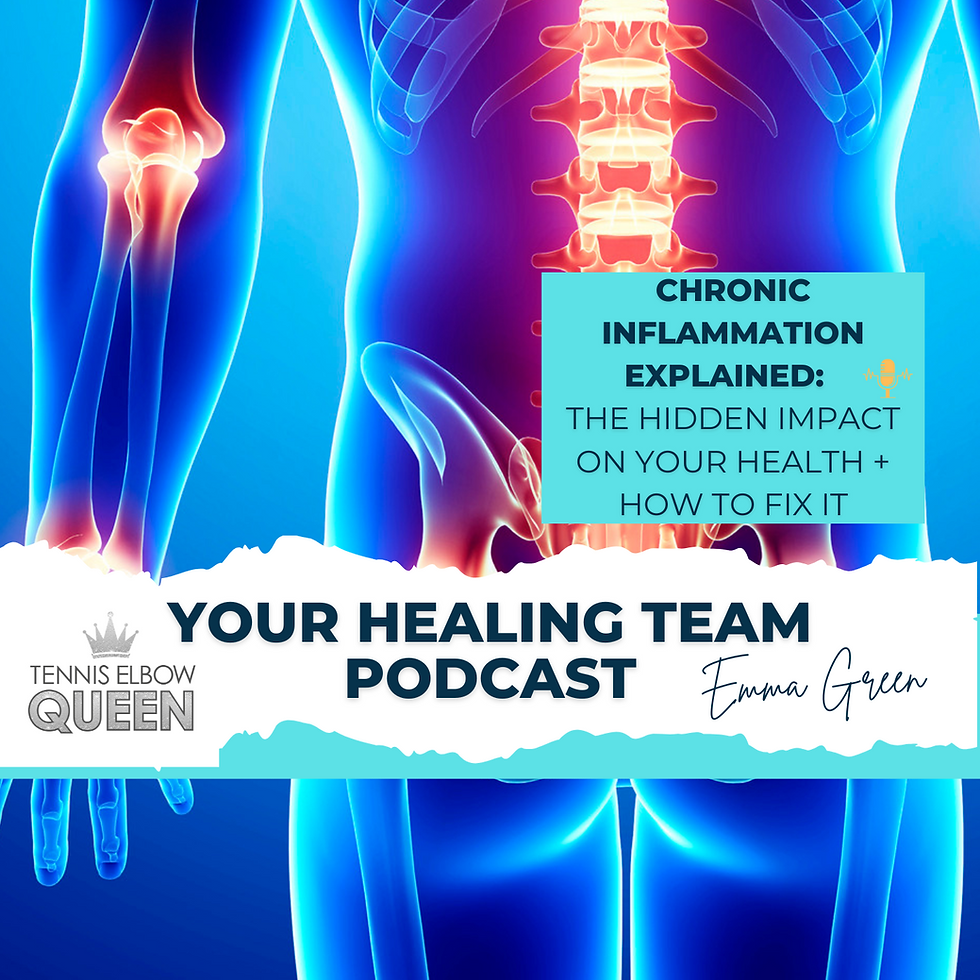What is the best way to fix tennis elbow?
- emmagreenpt
- Sep 20, 2023
- 3 min read
Tennis elbow, also known as lateral epicondylitis, is a painful condition that affects not only tennis players but also people from various walks of life. Characterized by pain and tenderness on the outer part of the elbow, it can be a debilitating condition if left untreated.
If you've got tennis elbow, you've likely Googled the above question and you'll have got the bog standard answers, namely:
Nonsurgical Treatment
Rest.
Non-steroidal anti-inflammatory medicines.
Brace.
Physical Therapy.
Before they hit you up with the surgical options and a ton of ads:
Surgical Treatment
Various Procedures.
Arthroscopic surgery.
Surgical risks.
But let's unpick these "recommendations" a bit:
Rest, or as I prescribe Relative Rest, is actually going to be important for your healing. if you keep doing something that hurts your elbow, your elbow is going to keep hurting! Makes sense really doesn't it.
So, conversely, if doing a specific activity DOESN'T hurt, then there's no reason for you to avoid it.
Anti-inflammatory medications have been prescribed since they were invented, but medical research has progressed and we now know that there are not many inflammatory cells once you've had tennis elbow for a couple of months or more. So, why would you need anti-inflammatories, if there's no inflammation there?
Braces can be helpful in getting pain under control during the first 4-6 weeks. After that, they can become detrimental, as the muscles of the arm will weaken drastically with prolonged use of braces. The type of brace also matters. Check out the 2 braces I recommend on the products page here.
Physical therapy can certainly heal tennis elbow - it's what I've been doing for the past 15 years! However, not every therapist will be an expert in tennis elbow. Most "general" therapists see one or two tennis elbow patients per year. So, they are not able to hone their expertise as they just don't see enough of them. If you've tried PT in the past and didn't get the results you were hoping for, it might just be that you weren't working with the right therapist for you. Don't discount it. Many of my clients have seen other therapists before they reach me. Some even get referred by those therapists.
Surgery is rarely needed for tennis elbow. In the last 15 years of working with thousands of elbows, there was only ONE person who I've seen that truly needed surgery. Just one out of thousands! If you haven't explored every single conservative option first, you are doing your elbow a disservice. Surgery is not the panacea it is sometimes made out to be. It's more like the end-of-the-line option when your doctor has run out of things to try.
Some of the newer "procedures" for tennis elbow have been developed out of separation to help chronic sufferers, but there are better ways to heal the tendon. Having a needle poked into a tendon for any reason is detrimental to that tendon - the research shows us this. There are proven conservative ways to resolve tennis elbow.
Eccentric strengthening exercises have been found to be particularly effective in treating tennis elbow. These exercises involve lengthening the muscles while they are under tension. Common examples include wrist extension exercises with a dumbbell or resistance band. It's crucial to perform these exercises under the guidance of a qualified physical therapist to ensure proper technique and avoid exacerbating the condition. Check out the video of this exercise in the book bonuses of Tennis Elbow Relief.
Stretching exercises can help improve the flexibility of the forearm muscles and reduce tension on the tendons. Gentle stretches, such as wrist extensor and flexor stretches, should be performed regularly. Learn how to do these stretches here.
Tennis elbow can be a painful and frustrating condition, but with the right approach, it is treatable. The best way to fix tennis elbow involves a combination of rest, physical therapy, and home remedies. It's essential to consult with a healthcare professional for an accurate diagnosis and personalized treatment plan. With patience and dedication to your recovery, you can regain strength and mobility in your elbow, returning to your favorite activities pain-free.




Comments